An insider’s guide to train travel in Eastern Europe! A fantastic read for anyone who wants to ride a train across Europe! Plus, after reading this guide, you will not be able to stop yourself from buying tickets and riding across Europe.
Living in Germany allowed us to start exploring Eastern Europe and those post-Soviet countries that all gained their independence in around 1991. Taking the trains allowed us to get a taste of a few new countries at a time, meet the people, and see the landscapes glide by through the windows.
In this guide to using trains in Eastern Europe and the Eastern Europe rail pass, ee’ll share our planning strategy, suggested routes, and planning tools.
On top of that, we’ll also try to answer some frequently asked questions about train travel in Eastern Europe. And finally, we’ll share some stories from our journey.
In this article, you’ll learn:
- Common Questions About Train Travel in Eastern Europe
- An Epic Eurail Eastern Europe Itinerary
- Tools for Planning a European Train Trip
- Apps for Train Travel in Eastern Europe
- What are Train Stations like When You do Train Travel in Eastern Europe?
- More Useful Resources for Train Travel in Eastern Europe
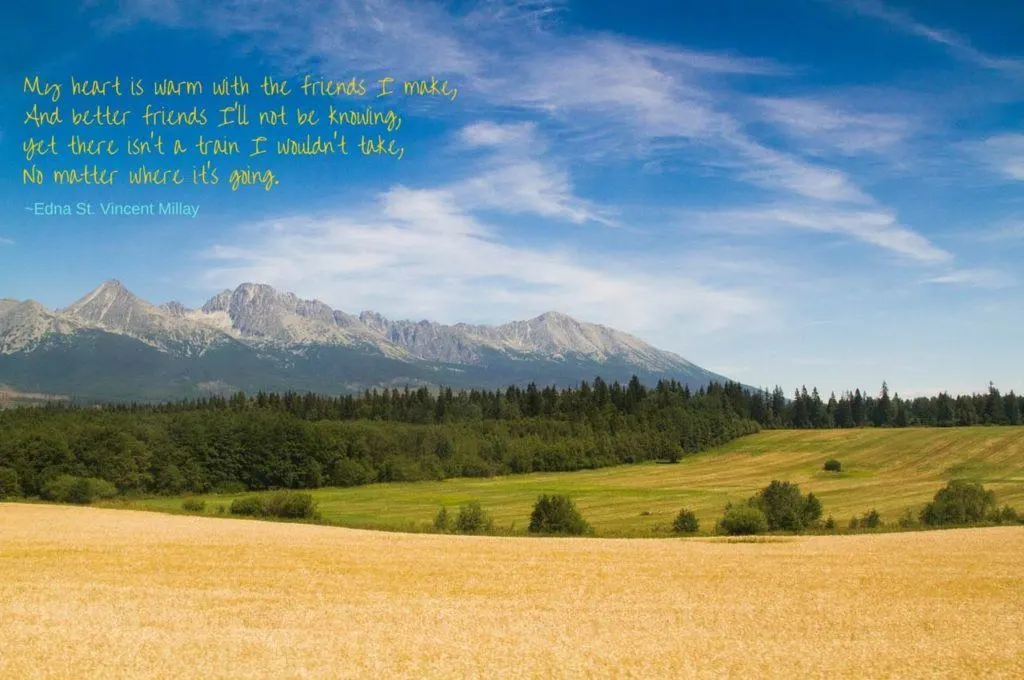
We really enjoyed taking the overnight trains from Ankara to Istanbul and Izmir while we were living in Turkey, and that is more what we had pictured. All of these thoughts and more were bubbling around in our heads and for the first time in a long time the prospect of going through the motions of travel, the getting from point A to point B, was something of a mystery.
When our Eurail passes arrived in the mail in early June I thought, “We have plenty of time to plan this trip.” There was this vague, nebulous idea that we would ride trains and our stops could be the capital cities of Eastern Europe.
We knew we would visit as many UNESCO World Heritage Sites as we could and that we wanted to visit as many new countries that time allowed. But when it came down to planning and figuring out a specific route we just kept avoiding it. What a chore!
Common Questions About Train Travel in Eastern Europe
And wouldn’t all of that planning and scheduling turn the trip into a checklist of sights and cities? Where was the adventure and romance of traveling through Europe on a Global pass, going wherever our fancy took us? It was easy enough to put off all of that drudgery!
We had lots of questions to answer while we were planning our train journey through Eastern Europe.
Is Train Travel in Eastern Europe Safe?
Traveling by train between cities is not the same thing as traveling on public transportation within cities. To begin with everyone should have a seat. So, there aren’t people bumping into you, trying to grab your wallet or camera.
That doesn’t mean there is no theft. It’s a good idea to keep your most valuable items, like your passport, credit cards, and money on your person. Especially on night trains, you will fall asleep, and that will give an opportunity to someone to steal.
It’s important to be aware of your surroundings, and know where your luggage is (try to stay as close as possible to it). On all the trains we’ve taken in Europe, we never felt unsafe, and we never had anything stolen. Everyone we met were just trying to get somewhere.
Do They Check Passports on Trains in Eastern Europe?
At every border, customs agents got on the train. In the Schengen zone, they visibly calculated how many days you had left on your visa. In fact, when we traversed Poland to Slovakia, a young couple were kicked off because they’d overstayed their Schengen.
Crossing the borders of all the Eastern European countries, the customs agents were thorough, but not intimidating, just like the ticket collectors.
Do You Need Seat Reservations on Trains in Eastern Europe?
One of the questions we got a lot was, “Did we always need a seat or ticket reservation?” It usually only costs a few euros to reserve a first class seat (if there is a first class car on the train) so if you have time you might as well get the reservation.
We found that many of the ticket clerks would tell us if we didn’t really need the reservation and they were always spot on. Sometimes, however, you don’t have time to make the reservation or even inquire about it. What does an intrepid Eurail traveler do in these situations?
Leaving Krakow we had intended to head north to Warsaw and had made the reservation in the afternoon the day before we planned to depart. During the evening we talked ourselves out of Warsaw and right out of Poland.
It was time to start heading south and east, that’s why we came on this trip wasn’t it? The reservation was free so we just scrapped it.
The ticket office in Krakow is open all night but I wasn’t really feeling up to the 15-minute walk at midnight so we just consulted our trusty DB Navigator, found a train leaving early the next morning, got a few hours of sleep and then jumped aboard the train for Zilina.
There weren’t any first class cars so we just grabbed a seat in second class and had a great time making friends. In Zilina we switched trains to Levoca and–yes!–there was a first class car.
The second class cars were all overloaded with no seats to be found. We had to walk through all eleven cars with the hopes that first class would have some seats available.
We checked carefully once we got there and found the last two empty seats on the train had reservation labels on them. We had learned to read them carefully and, as luck would have it, the previous occupants of these two prime seats had only been riding from Bucharest to Zilina.
They had just left when we got on. We took the seats and relaxed comfortably while at every other stop we saw more and more passengers boarding without reservations or seats.
Did we always need reservations? No, but it sure would have been better that time around. So did we go to the train station and talk to a person to plan all of our routes?
No way. Most of these ticket offices or traveler information desks are so busy, especially in summer, that we would have wasted far too much time waiting around.

Building Our Eastern Europe Itinerary
We had the map that came with our passes, and we loved pulling it out and just dreaming about the routes we’d take and the cities we’d visit, but reserve a specific train on a set date? Two months ahead of the visit?
No way. Instead, we spent time looking for resources, trying to figure out the best way to go about this and still maintain some spontaneity.
In the end, we came up with a set of tools and resources which helped us along the way, and it seems like a good idea to share those with others and hopefully help them save some time in their own journey.
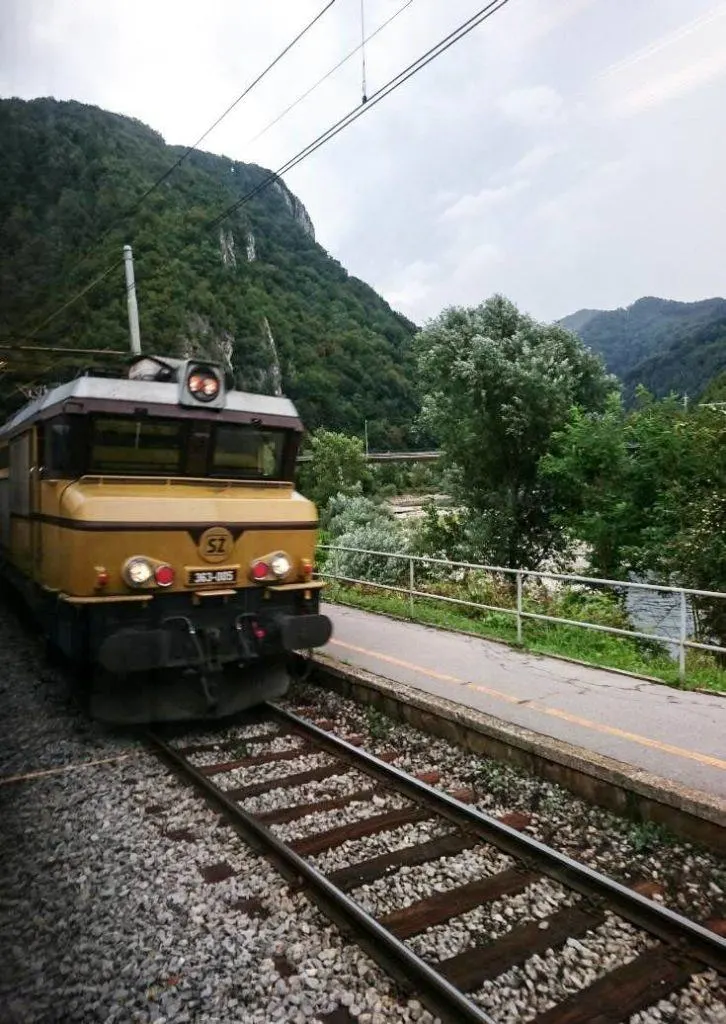
Knowing where we wanted to visit along the way was helpful, and once we picked our first destination, everything else just started falling into place.
There were some days on the trip where we changed routes two or three times based on something we read online or after listening to some fellow traveler’s advice. But somehow, everything just worked during our train travel in eastern Europe.
Our final Eastern Europe itinerary turned out like this:
Weiden, Germany–Krakow, Poland–Levoca, Slovakia–Budapest, Hungary–Sibiu, Romania–Bucharest, Romania–Sofia, Bulgaria–Thessaloniki, Greece–Skopje, Macedonia–Belgrade, Serbia–Ljubljana, Slovenia–Graz, Austria–Murzzuschlag, Austria–Weiden, Germany

Train Travel in Eastern Europe – Our Train Trip Begins
Walking from our front door to the train station in our little town of Weiden, Germany, we weren’t really sure what was in store for us. Sure, we’ve both been on trains before. Even long distance overnight trains.
Would the trains of eastern Europe be clean, comfortable, and fast like those in the west? Or crowded, slow, hot and grimy, like those crossing the subcontinent of India? More likely, we thought, somewhere in between.
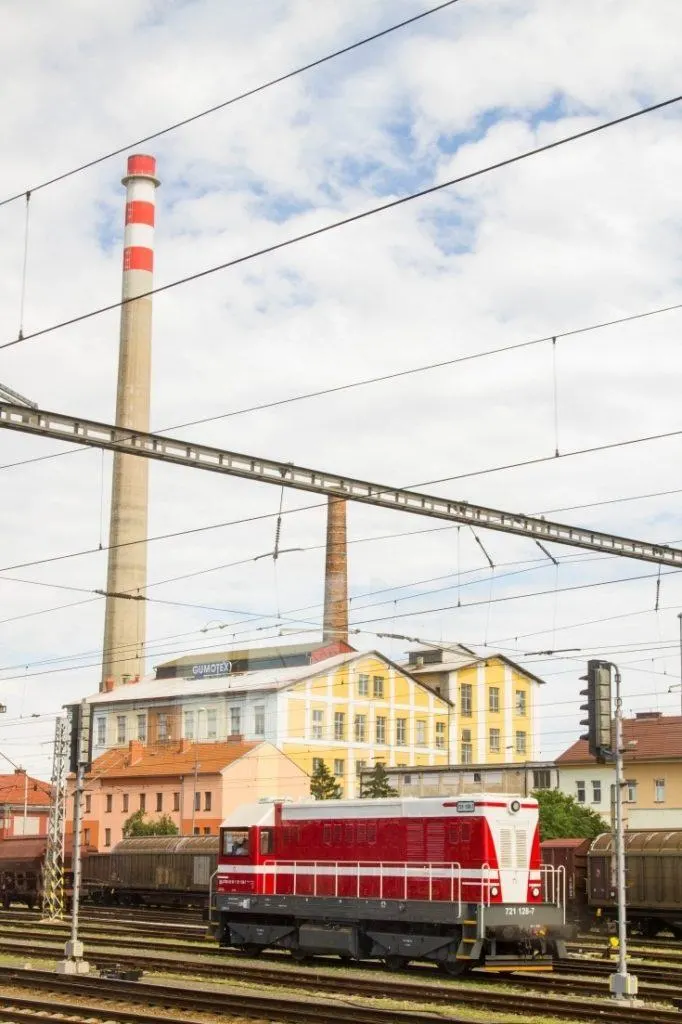
Weiden is a small town with a two-platform station. A few intercity trains go through and even fewer actually stop, so from there we had to take an hour-long commuter ride to Regensburg.
This short sleek new train was fast and comfortable. We were actually cold inside the car, while outside it was the beginning of one of the most blisteringly hot heat waves in Europe’s recent history.
We must have been showing our eagerness and excitement all over our faces; we looked so happy to be on our way that the ticket agent asked us within ten minutes if we wanted her to take our photo. We did!

Aside from this short interaction, train travel at the beginning of our trip was impersonal and sterile. We seemed to be traveling in our own bubble much like during air travel.
As we traveled east and then south that bubble expanded and grew to include more passengers in nearby seats. Somewhere outside of Skopje that bubble burst completely and we were part of a larger community now; all traveling, talking, commiserating, and sweating together in one car packed full of passengers.
Leaving Belgrade and traveling back west and then north we could feel that bubble contracting back towards us and enclosing us in the safe but less than stimulating travel cocoon of western Europe. It seems the more modern and fast the trains traveled the more we were isolated from our fellow travelers.

Perhaps the best example of train traveling working as a catalyst for creating community happened to us on the route between Romania and Bulgaria.
The train connecting Bucharest to Sofia, one of many magnificent Eastern European capitals, seems to have been put in place with the sole purpose of transporting backpackers and other tourist-type rail pass passengers from one major hub to another.
The train consisted of an engine and two cars and none of the passengers we encountered on that trip were from Romania or Bulgaria, everyone of us a traveler, all backpackers in spirit despite the actual luggage being carried.
That train started out as any other in the East. No air conditioning, windows open, passengers sitting quietly in their cars, some sleeping, others reading, small groups in conversation.
The usual banter back and forth: “where have you been on this trip?”, “where are you going?”… exchanges of hotel information or hidden treasures found along the way. All of that ended, however, at the border.
Our train arrived at the border crossing on time and we all sat patiently as the border patrol came on and checked passports.
After they left and we continued to sit in the hot sun, people began to get restless, walking up and down the aisles, exchanging theories on the delay–the bubble was expanding.
After half an hour someone realized we were waiting for the train coming from Sofia, the two engines would be detached and then reattached to the other train’s cars and then pull them back into the engines’ countries of origin. The tourists and the passenger cars could cross borders, but not the engines or their drivers.

After an hour with no sign of the Bulgarian train, passengers began climbing out of the cars. We descended upon that poor somnolent station building like a swarm of lotuses looking for food. Literally.
We were looking for food and drink. No one had been prepared for the delay and water (and alcohol) rations had run dry in the 100 degree heat. A foraging explorer from New Zealand found a small kiosk operating out of a ramshackle hut on the edge of the tracks selling water, snacks, ice cream and beer.
Soon, the entire contents of both cars had spilled out onto the one and only cement platform and an impromptu party broke out. There were toasts to be made, songs to be sung, food to be shared, arguments to be won, friends to be made, breakups, hookups, tears, laughter and–finally–cheers!–as the long overdue train chugged up the tracks towards our motley crew.
Back aboard the train there was a new sense of camaraderie and for a few, at least, the party continued on down the tracks.
This one train ride encapsulated the entire adventurous, and might I say, nostalgic experience. Everything I’d ever read, every story I’d been told or movie I’d seen about a train trip was found in that one leg of our journey.
To be sure, parts of that experience were repeated throughout our adventure but never was it all to be found again on one single train ride.

Beautiful sunsets were just one of the bonuses of train travel in Eastern Europe.So, aside from the adventure and the sense of mystery and facing the unknown, why travel by Eurail? The internet is overflowing with blog posts and articles about how to travel cheaper by rail.
But if you read those posts you’ll quickly discover that while it may be true that we could have done our entire journey for less than the cost of the Eastern Europe Rail Pass, we would have had to know six months prior exactly where and when we wanted to travel.
All of the legs of the journey would have needed to be booked and reserved so far in advance that there would have been no mystery, no flexibility, no unknown to face and overcome.
We were able to use our passes with a magical sense of power. A magic wand allowing admittance and passage across flowing visions of mountainous landscapes, windswept plains, and mirror like lakes reflecting the reds and pinks of sunset as we rattled off into the night.
At no time did our passes let us down. I’m pretty sure that there was one bus in Austria where the mere flash of our rail pass bewitched the driver and convinced him to let us board and ride for free.

An Epic Eurail Eastern Europe Itinerary – Train Travel in Eastern Europe
For our sample easter Europe train adventure we recommend starting out in Munich, Germany. This is a very easy destination with many affordable low cost airlines serving it. Of course, you could start your journey somewhere else along the route. Do some careful searching for cheap flights into Munich, Vienna, Prague, or Warsaw and choose the starting point that works best for you. All of these cities make an excellent starting point for this itinerary.
Munich, Germany
Munich is one of the easiest and cheapest airports to fly into. For this reason it is often the starting point for an eastern Europe train adventure. However, don’t just land, get off a plane, and climb onto a train. Take some time to visit this bustling Bavarian capital. While you’re here consider checking out: the world famous Hofbrauhaus, Berchtesgaden, and the biggest party on Earth – the Oktoberfest (if the time is right). Be sure and check out some of these must try German dishes while you are here, as well.
Time allotted: 2 days
Where to stay: Design Hotel Stadt Rosenheim Munich
Where to eat: Hofbrauhaus, Wirtshaus in der Au
Prague, Czech Republic
Czechoslovakia was one of the first countries to part ways from the Soviet Union and later went through the Velvet Divorce splitting into the two countries of Czechia and Slovakia. Both of these incredible countries should be on any Eastern Europe itinerary.
Czechia is best known, in my view, for inventing the best beer in the world, pilsner. The capital city, Prague, is a fairytale town with towering gothic spires, and wonderfully ornate architecture. Don’t miss the Top Attractions in Prague like the Charles Bridge, the Astronomical Clock, and the Clementinum (best view in the city). Of course, when in Prague, everyone should have a beer at U Fleku, a warm trdelnik from a street vendor, and some roast pork with bread dumplings.
Time allotted: 2 days
Where to Stay: Unitas Hotel
Where to eat: U Fleku, U Parlamentu
Krakow, Poland
Poland’s relatively flat landscape, punctuated by rolling hills and shallow river valleys, makes for easy traveling by train; while it’s medieval town centers offer a vibrant splash of color. Spending two days in Krakow provides the perfect introduction to this friendly country. Explore somber WWII history with a visit to Auschwitz, then go way back in time plumbing the depths of Wieliczha Salt Mine, and later take some time for a beer and pierogi in the old town central square.
Time allotted: 2 days
Where to stay: Betmanowska Main Square Residence, Hotel Gródek
Where to eat: Pierogarnia Krakowiacy, Gościnna Chata
Levoca, Slovakia
The train journey from Krakow to Levoca is one that needs to be taken during the day. Be sure to be on the left side of the train after leaving Zilina for the best views of the High Tatras mountains. The UNESCO inscribed walled town of Levoca is a renaissance dream. Spend the night in one of the quaint inns in the center and then explore the town in the morning. Don’t miss the Gothic church, the “cage of shame” and the old town hall.
Time allotted: One overnight
Where to stay: Hotel U Leva
Where to eat: U Leva
Bratislava, Slovakia
Bratislava, the capital of Slovakia, is a vibrant city embracing its proud past through a robust building renovation program. Most of the central Old Town has been restored to its medieval and Baroque splendor. Aside from taking a stroll back in time around the expansive pedestrian zone, visitors shouldn’t miss the Blue Church, the quirky sculptures, and the beautifully restored castle.
Time allotted: 2 days
Where to stay: Art Hotel William, Arcadia Boutique Hotel
Where to eat: Koliba Kamzík
Budapest, Hungary
Few cities have as much charm and old world mystique as Budapest. Spanning both banks of the Danube River, this incredible city of spas and baths is full of romance and culinary treasures. Take a cooking lesson, ride the Children’s Railway, and just explore the sights. Of course you must have a hearty plate of chicken paprikash, some goulash, and a bowl of fish soup on a river boat.
Time allotted: 2 days
Where to stay: Danubius Hotel Gellert, Novotel Budapest Danube
Where to eat: Kéhli Vendéglő, Szegedi Halászcsárda, Mazel Tov
Romania
Known for its haunting stories of Transylvanian vampires, Romania today is anything but scary. This beautifully idyllic countryside provided hours of gorgeous scenery in our window. Get off the train to see ancient castles, fortified churches, and stunning landscapes. Must try foods include mamaliga (polenta), salata de vinete (eggplant dip), and Fasole făcăluită (bean casserole).
Our recommendation is to get off the train for Sightseeing in Sibiu. Then rent a car for a few days and take a road trip to: fortified churches, Sighisoara, the Transfagarasan Highway, and Transylvania. Continue by train to Bucharest for a visit to the capital city.
Time allotted: 4 days
Where to stay: Art Hotel (Sibiu), Cavaler (Sighisoara), Trianon (Bucharest)
Where to eat: Casa Krauss (Sighisoara), Caru’ cu bere (Bucharest)
Sofia, Bulgaria
Bulgaria is situated on the historical land route into Europe from Asia. Because of this, it has seen countless invasions throughout history. Sofia’s architecture, therefore, is a crazy mix of everything from ancient roman ruins, Byzantine churches, Ottoman mosques, to Soviet gothic stadiums. This makes exploring the city particularly fascinating as you never know what to expect around the next corner. Don’t miss the multi-domed Saint Aleksander Nevsky cathedral, the ruins of ancient Serdica, and a stroll down Vitosha Boulevard pedestrian zone.
With extra time rent a car and explore the surrounding countryside with a trip to Rila Monastery or the wine growing region around Melnik.
Time allotted: 2 – 3 Days
Where to stay: L’Opera House
Where to eat: Moskovska Restaurant 15, Rainbow Factory
Thessaloniki, Greece
It may be the cradle of Western Civilization but Thessaloniki still feels like Eastern Europe to me! History is everywhere in this city. And if that’s not your cup of tea, head out to the beach for some sun, swimming, and a waterfront seafood feast. Thessaloniki is a great base for exploring the surrounding countryside, especially on a road trip. From here, a visit to the stunning clifftop monasteries in Meteora is a must. With a little extra time, head into the mountains and checkout the Oracle at Delphi.
Time allotted: 2 – 3 days
Where to stay: Orestias Kastorias (Thessaloniki), Kastelia (Meteora)
Where to eat: The Rouga (Thessaloniki), Taverna Gardeina (Meteora)
Balkans
A trip to the Balkans could easily be its own adventure. We really wanted to experience as much of eastern Europe as possible on this trip so we made overnight stops in Skopje, North Macedonia, Belgrade, Serbia, and Ljubljana, Slovenia. It would really take quite a bit more time to explore these countries further as the train system coverage makes travel within country time consuming, if not impossible. Still, as far as authentic travel goes, the Balkans can’t be beat.
Time allotted: 3 overnights
Where to stay: Hotel Alexandar II (Skopje), Garden Hotel Srbija (Belgrade), City Hotel Ljubljana (Ljubljana)
Where to eat: Old City House (Skopje), Restoran Lovac (Belgrade), Julija (Ljubljana)
Make your back to Munich before your Eurail pass expires and enjoy one last beer and wurst before you catch your flight back home!
Tools for Planning a European Train Trip and Using Trains in Eastern Europe
There are several tools that really make it easier for you to get from point A to point B, but the starting point for most of our journeys was a map–a real, paper map. Sometimes you just want to unfold a map, spread it out on the table and let your imagination take you down the roads, train lines, rivers, whatever as you use trains in Eastern Europe!

Being able to see the big picture is invaluable in this age of phone screens and tablets. Sure, with the device there’s a lot more information at your finger tips, but it’s sometimes hard to connect the dots when you’ve swiped in and out and around so much that your original starting point is somewhere out in the clouds.
And it can be hard finding a good map that shows the train networks in Europe.
Most road maps don’t do a good job of this and the small maps in most travel books are pretty useless for planning a multi-country trip. There are some good rail maps available for purchase, but we just used the planning map that came with our Eurail packet.
Did it show every route in every country we visited during our Eastern Europe itinerary? No, but it did show the major routes, enough to know if you could get from point A to point B without too many train changes.
Google Maps
That’s where our iPhones really paid off. Our data plan is pretty generous and includes unlimited data in most of Europe; theoretically we could be online in most of the countries we visited. However, in practice we were without data more often than we had it.
We needed good offline tools and luckily there are plenty of them out there. We found that by using wifi or data when it was available we could plan a leg of the journey and then go offline and have all of that info still at our fingertips. One of the best tricks we discovered was using Google Maps offline.
But Google Maps will do so much more for you then just getting from one place to another. It has become the defacto goto app for restaurant and hotel reviews, used by both travelers and locals alike.
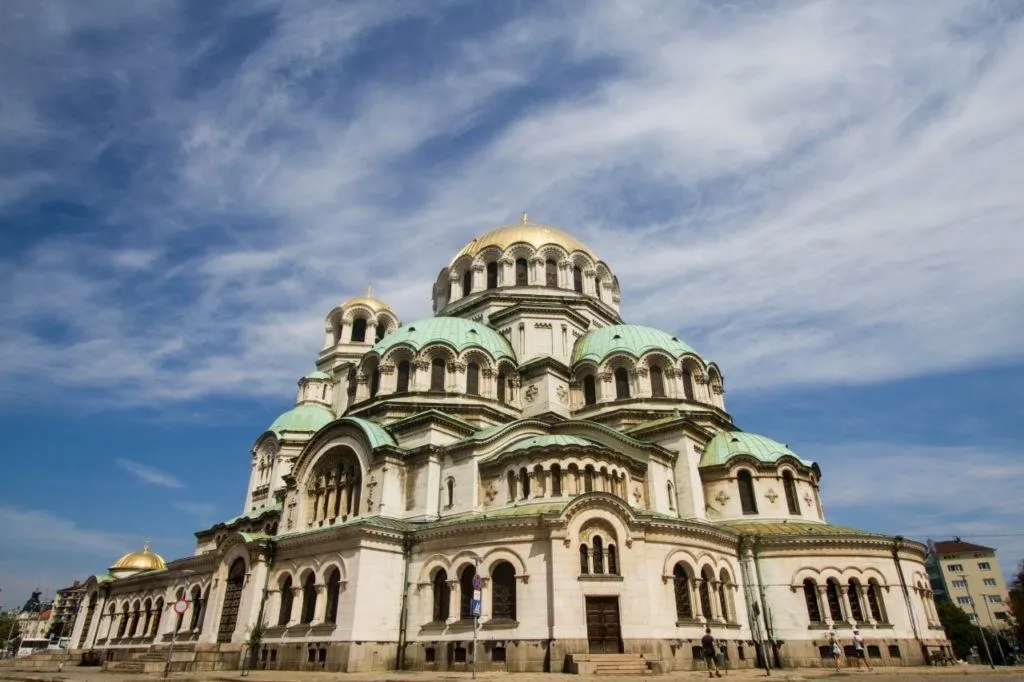
Tips for Using Google Maps Offline When You Do Train Travel in Eastern Europe
If you Google “using Google Maps offline”, you’ll find the answer quick enough. It’s really not a secret. There’s a couple ways to get it done but the easiest is to search for the name of the city or town where you’re heading then zoom in or out to get the area you’ll need and type “ok maps” in the search bar.
A quick download and the map is available when you’re offline simply by tapping on the three bars icon and choosing “your places”.
Another useful tip for google maps is to use the phone’s built-in GPS to make sure you know when you’re getting close to your destination or to that next transfer point. This one’s easy too.
Before you leave the data area, start a route plan for your destination. When you leave the data area you’ll still see your location on the map and you can watch the little blue ball getting closer and closer to the station. This is invaluable for knowing exactly when you will be arriving at a destination.
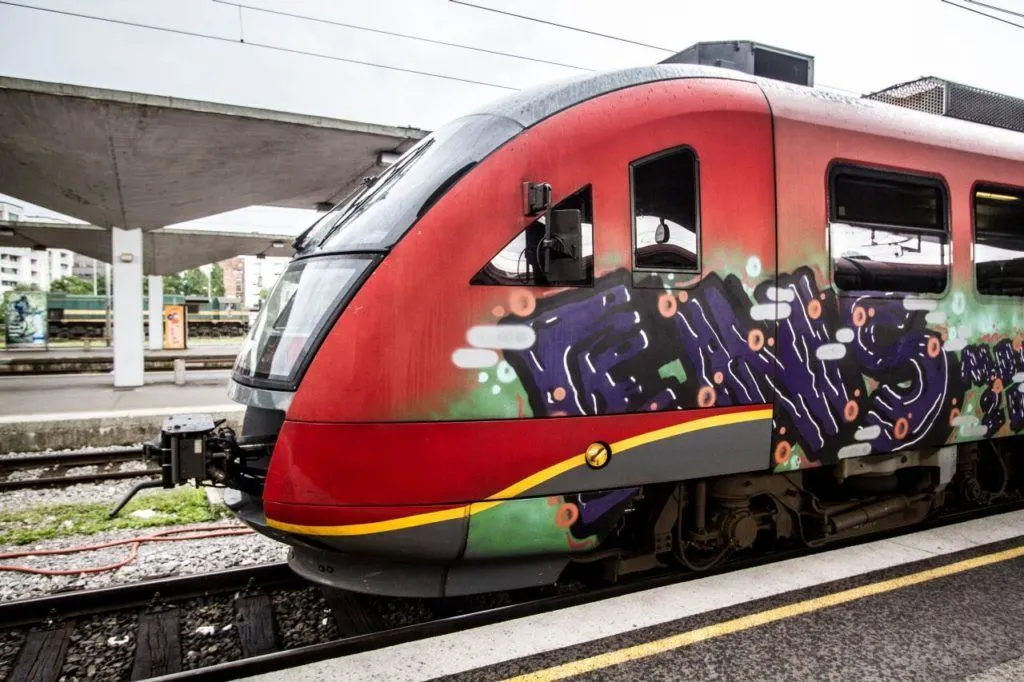
Pocket Earth
Another very useful map app I use all the time is PocketEarth – This is a super good offline map app, but it’s only available on iPhone.
I first found this in Singapore and it was so good there that I’ve been using it everywhere ever since. After installing the app just download the map for the country you’re visiting or just the city. It has a pretty extensive database and does a good job of providing directions. It also shows your location via GPS.

Apps for Train Travel in Eastern Europe
Again, here’s where the phone came in “handy”. There are plenty of apps and websites to help you plan your way through Europe. Some work better than others and some just feel better.
DB Navigator
My favorite app for route planning was the DB Navigator provided by Deutsche Bahn, the German Train company. This app can find a route from nearly any point in Europe to any other point at any time of day or night.
Another really useful feature of this app is that you can use it in map mode to find a station and see all of the possible direct destinations out. This is really useful when you’re being spontaneous and looking for something you hadn’t thought of already.
Eurail/InterRail – Rail Planner
There is also a similar app Eurail/Inter Rail–Rail Planner–and I thought it worked pretty well, but I found the DB app much easier and more accurate. For example, traveling from Thessaloniki to Skopje took 34 hours according to Rail Planner, but DB knew I could get the four and a half hour train direct between the two stations.
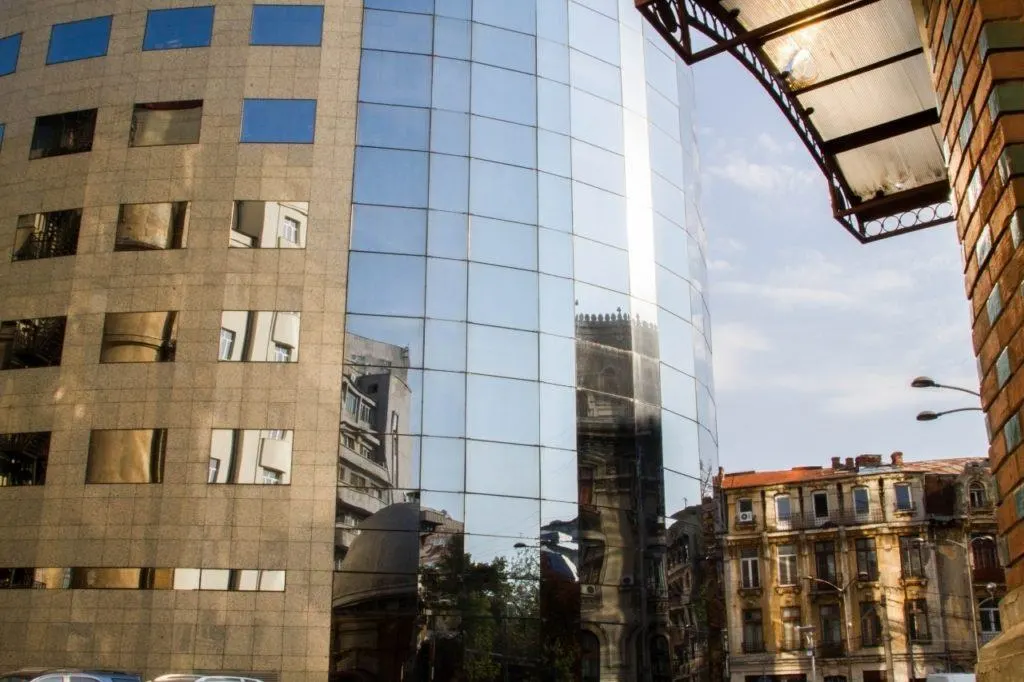
What are Train Stations Like When You do Train Travel in Eastern Europe?
Most of the time, we were able to just climb aboard the train we wanted and show our passes to the conductor. Other times we really did need to go through a ticketing office, to make a firm seat reservation.
Of course, that brings its own worries and frustrations. Like where is the office in the station, what language will they speak, and worse, how long will it take.
When we arrived in Budapest on a very hot and long Saturday in August, the ticketing counter was swamped with tourists, migrants, commuters and everyone was waiting for a number system that didn’t seem to be rolling over very often. Remember, August is the month that many Europeans take a holiday. It was busy!
We needed to get a reservation for our next leg, a sleeper cabin on the overnight train to Sibiu (you can’t just hop aboard these ones). I pulled 472 when the display was showing 391; I didn’t count but I’m pretty sure there were at least 80 other people waiting with number stubs in hand.
I didn’t want to spend my entire stopover in Budapest at the ticket office so I started reading the signs. One of them listed all of the places to get tickets and gave the opening times for those offices. It turned out one of the options was at the business lounge in that same station (Budapest Kaleti).
That was when we discovered our first-class Eurail pass was a magic wand that would allow us entry into the pristine, air-conditioned realm of “business lounge land.”
Here we could relax, use a clean toilet, enjoy a free snack and cold drink, and–most importantly–book our overnight train to Sibiu.
After a short but pleasant break, we left the lounge with our reservation, stopped off at the regular ticket office (serving number 432), and gave our 472 to a dejected-looking man holding number 631. It really made his day!
Power Tip: Look for business lounges in the central stations of major European cities and use your first class Eurail pass to gain entry.

Do You Need Hotel Reservations When Planning an Eastern Europe Itinerary?
The next question…How did you find places to stay without reserving ahead of time while doing this Eastern Europe itinerary?
After we decided where we were heading, out came the phones! With limited data between stations, you need to find a hotel before you get on a train. For the most part, we stopped in larger cities that have many hotels, and Booking.com came through each time. (Below we’ve listed the hotels we stayed in.)
Of course, if you have your itinerary planned out well in advance then you might as well make all your reservations ahead of time.
But, if you’re more spontaneous and drifting along wherever the current pulls you, just make sure to do it before you arrive, especially if it will be at night.
Don’t wait until you arrive to start looking for a hotel! You’ll spend hours walking around a city, dragging your luggage along behind, getting hungrier and thirstier with every failed attempt. There’s nothing worse than being tired and trying to schlepp around and find a hotel aftering doing a bit of train travel in Eastern Europe.

More Useful Resources for Train Travel in Eastern Europe
Seat61
Need to know anything and everything about rail travel in Europe (and probably the entire world)? You will find the answer from the man in seat 61. This is the definitive source for rail travel how-to, route planning, train information, station information, seat information, wow, you name it if there are steel rails involved he has the info.
Rome2rio
This is pretty good website for spit-balling any travel ideas as you train travel Eastern Europe. You can put any to-from points in and get routing information and price estimates on planes, trains, automobiles, taxis, buses, planes, ferries, donkey carts…OK, just kidding about the donkey carts. But I’m sure if someone published the mule train schedule for getting around Petra then Rome2rio would include that too!
If you’re dreaming of your own Eurail journey in the not too distant future, you should definitely check out some or all of the resources we mentioned in this post. Be prepared and stay flexible; allow for spontaneity and adventure!
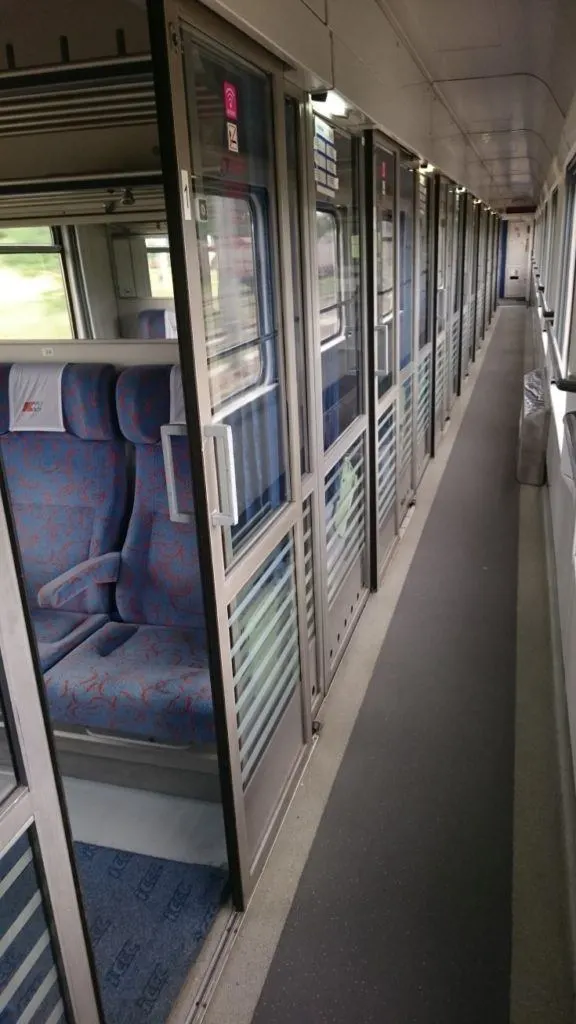
“Anything is possible on a train: a great meal, a binge, a visit from card players, an intrigue, a good night’s sleep, and strangers’ monologues framed like Russian short stories.” –Paul Theroux

Conclusion
We loved experiencing train travel in Eastern Europe! It was a fun and exciting journey that we think you should try as you plan your very own, Eastern Europe itinerary.
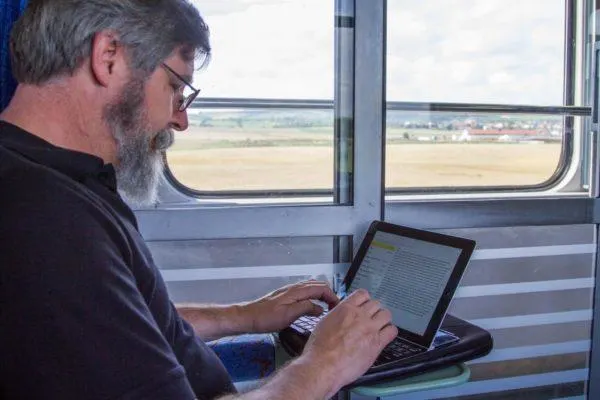
So, be sure to check out the Eastern Europe Rail Pass and enjoy all that this amazing part of the continent has to offer. Also, our epic train trip through Eastern Europe is partially thanks to Eurail who offered us Global Passes to use as we wished. As usual, all thoughts and opinions are solely our own.
Author Bio: Jim Vail, is a travel, food, and video creator and a perpetual traveler who has been travel writing for over 15 years. For many years he lived overseas in Germany, Japan, Turkey, South Korea, and the Netherlands, and he’s visited over 90 countries.
If you enjoyed Eurail through Eastern Europe...
Pin Travel By Train In Eastern Europe for later!



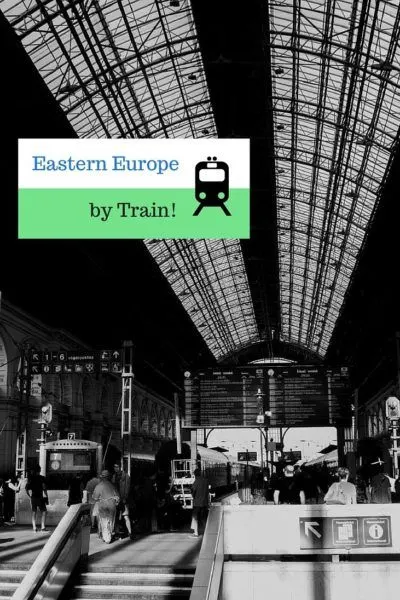



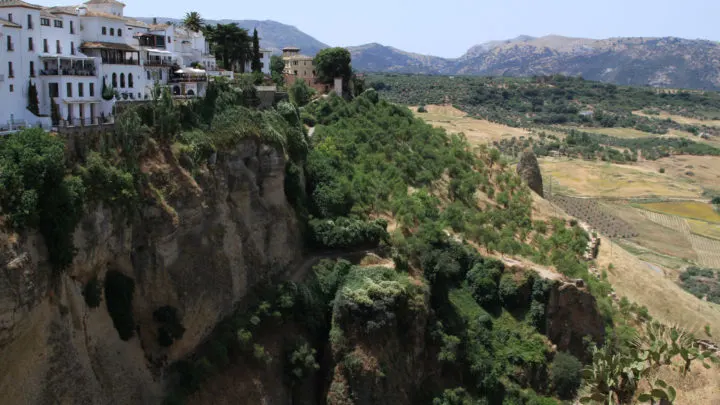



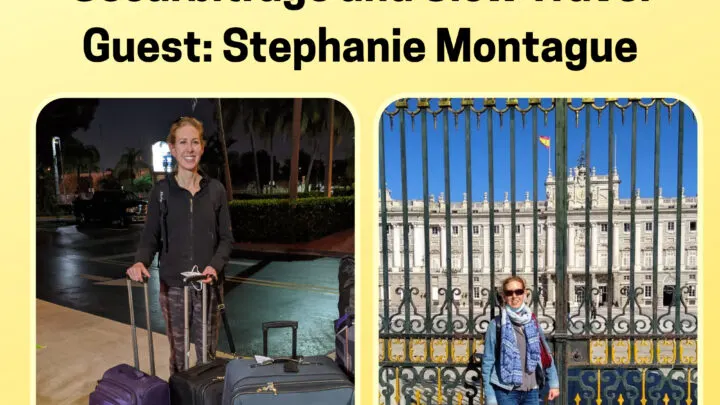
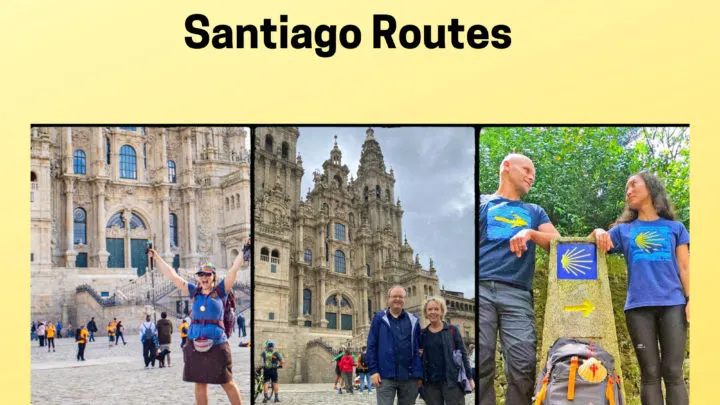



2traveldads
Thursday 16th of February 2017
Such great storytellers, these two. Yes, a Eurail pass is NOT the cheapest or easiest way to get about Europe, but you definitely get some good stories.
Corinne Vail
Thursday 16th of February 2017
Rob, That's right. It's a right of passage, and a dream for storytellers!
rhonda albom
Monday 7th of September 2015
Interesting experience. I noticed it was a resourceful Kiwi that found the water and food :) I am with you on not planning way in advance and being flexible.
Corinne Vail
Monday 7th of September 2015
Rhonda, And that Kiwi made quick friends, let me tell you!
Anda
Saturday 5th of September 2015
Interesting experience, Corinne. I am surprised than an international train from Romania had no air conditioning. 27 years ago when we moved out of Romania they still had steam engine trains, but then 2 years ago when we went back and try to travel by train between two cities I was surprised by the long way they have come. The train was very modern, air conditioned and had all the amenities a modern train should have.
Jim Vail
Monday 7th of September 2015
Hi Anda, We had the feeling the cars were some of the older and less maintained cars that were constantly moving between the two countries. It was almost as though neither national train company had taken responsibility for their upkeep.
Anabel
Thursday 3rd of September 2015
Great story, great pictures! Can't wait to read more.
Corinne Vail
Friday 4th of September 2015
Anabel, We have so much to write about! Our summer was very busy!